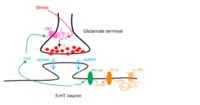- Thread starter
- #921
States With Legal Recreational Cannabis Have Fewer Vaping Lung Injuries, Study Finds
Article
Apr 08, 2020
The researchers found that the average recreational cannabis state had 1.7 EVALI cases per million people. In contrast, the EVALI case rate in medical cannabis states was calculated to be 8.8 cases per million, and in prohibition states 8.1 cases per million, though the difference in EVALI case rate between medical and prohibition states wasn’t deemed statistically significant.
“It appears states that have legal access to marijuana have lower rates of EVALI cases, which is consistent with the hypothesis that people have demand for marijuana products, and in states where they don't have access to them in this regulatory fashion, they end up purchasing them elsewhere,” said study author Alex Hollingsworth, to MedPage Today.
Article
Apr 08, 2020
The researchers found that the average recreational cannabis state had 1.7 EVALI cases per million people. In contrast, the EVALI case rate in medical cannabis states was calculated to be 8.8 cases per million, and in prohibition states 8.1 cases per million, though the difference in EVALI case rate between medical and prohibition states wasn’t deemed statistically significant.
“It appears states that have legal access to marijuana have lower rates of EVALI cases, which is consistent with the hypothesis that people have demand for marijuana products, and in states where they don't have access to them in this regulatory fashion, they end up purchasing them elsewhere,” said study author Alex Hollingsworth, to MedPage Today.





 I’m having too much fun to feel any less than the thrill of learning.
I’m having too much fun to feel any less than the thrill of learning. 


